Seeing the hundreds of hot air balloons all rise and float around at sunrise had been on my bucket list for a little while; ever since starting photography, and Cappadocia certainly did not disappoint. For those that do not know, Cappadocia is a region in central Turkey known for having some of the best conditions on the planet for hot air balloons to take off and fly, and so every morning up to 200 hot air balloons take off to allow thousands of visitors to watch the sun rise from the sky. Originally, people came to view the incredible landscape with its unique rock formations and history, but as more and more hot air balloon companies emerged, the hot air balloons themselves became the attraction, and so many people visit without knowing there is anything else they can do here. Of course, the Hot air balloons are a once-in-a-lifetime experience with some of the best views you’ll ever get, but this region also has so much more to offer.

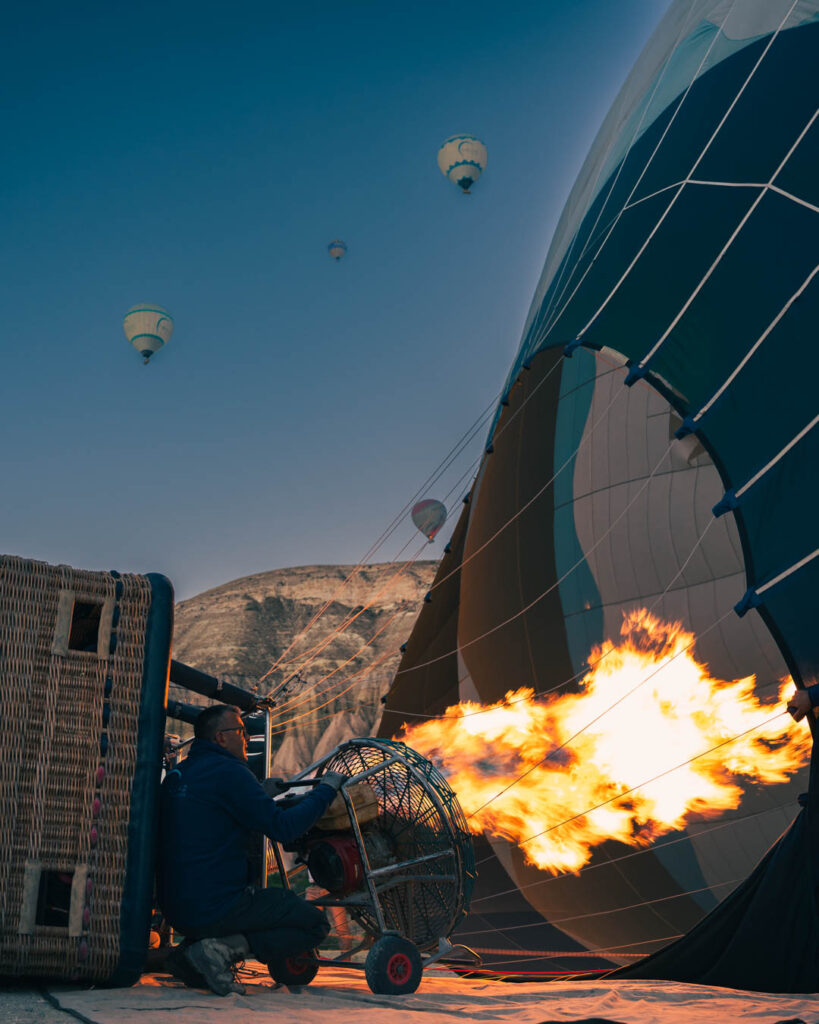
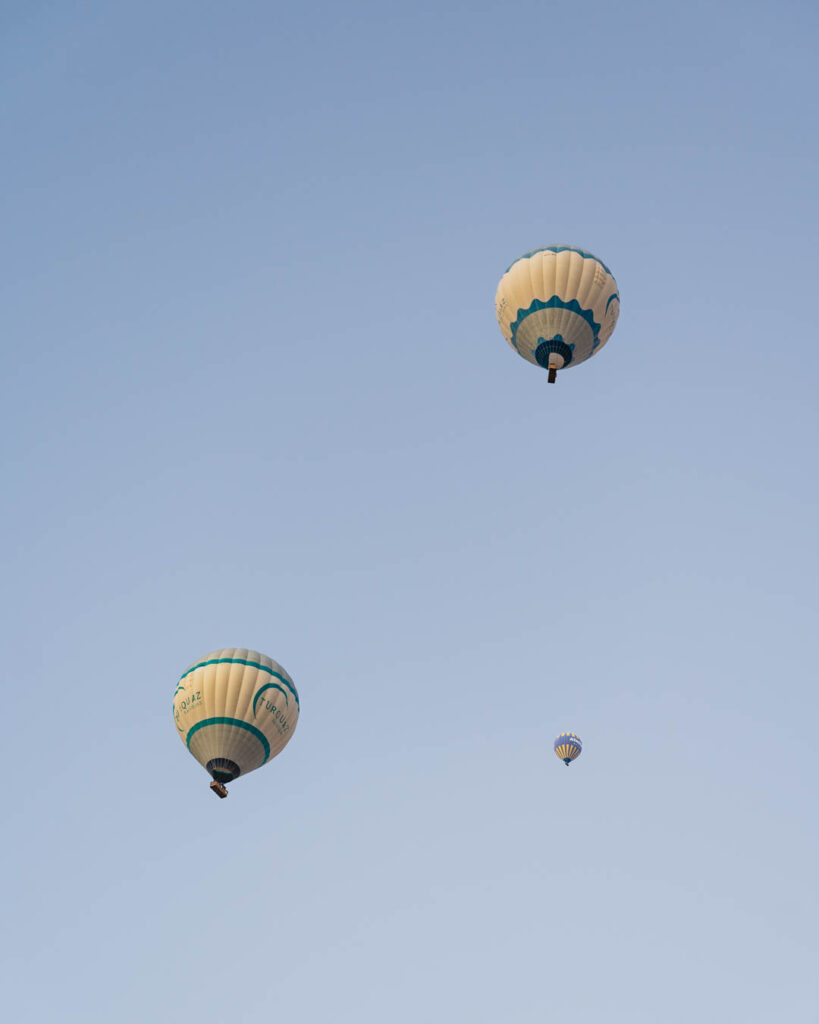
With that said, if you are going to come to Cappadoccia, you have to do the hot air balloon flight on your first day. This is because hot air balloons rely on the weather a lot, and so if the weather isn’t playing ball, the balloons get cancelled. Planning the flight on your first day means that if they don’t fly that day, you still have time and a second chance to fly on the subsequent days. While we were able to fly on the day we arrived, this wasn’t the case for the whole time we were in Turkey, with the flights being cancelled on the two days before our arrival and on the day we left. Most companies will offer a replacement date if yours is cancelled and only take payment on the day of your flight, so you’ll never pay for a flight you don’t go on. It is worth checking reviews for the company you book through, as there are some which advertise themselves as a Capadoccia hot air balloon but take off nowhere near the famous spot. This is because Capadoccia is the region name, like saying Sussex hot air balloon. What you want to find is a hot air balloon that flies at or around Göreme, which is also where you are going to want to stay.
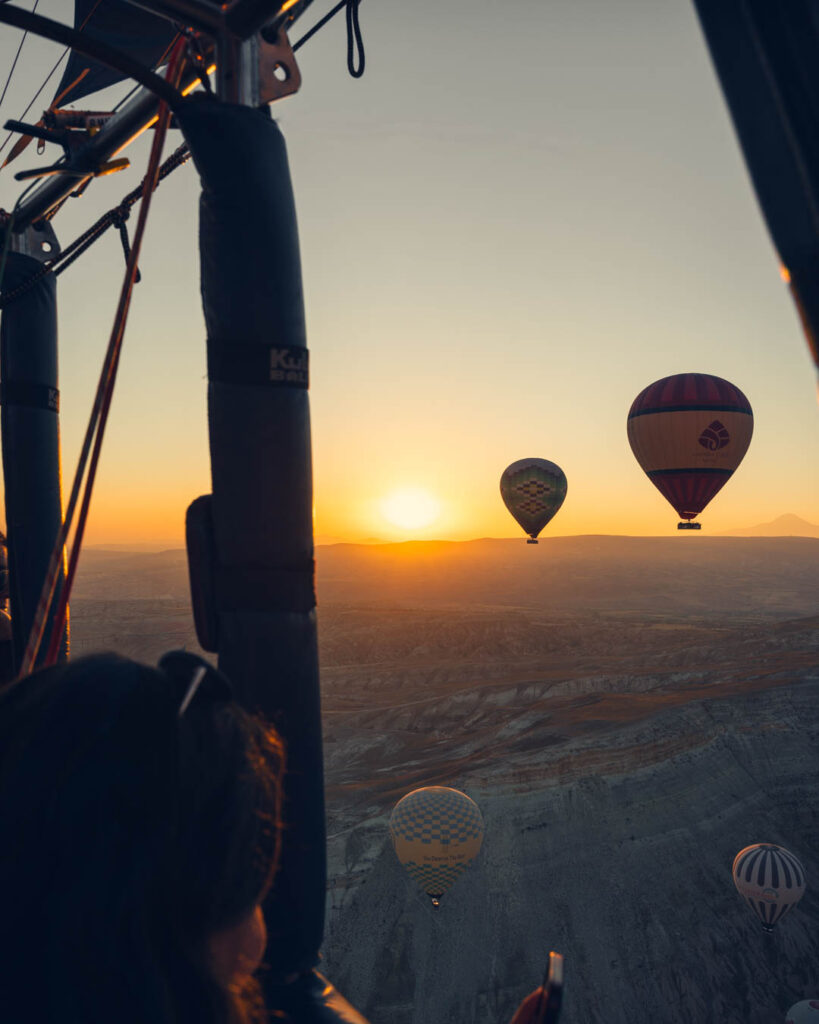
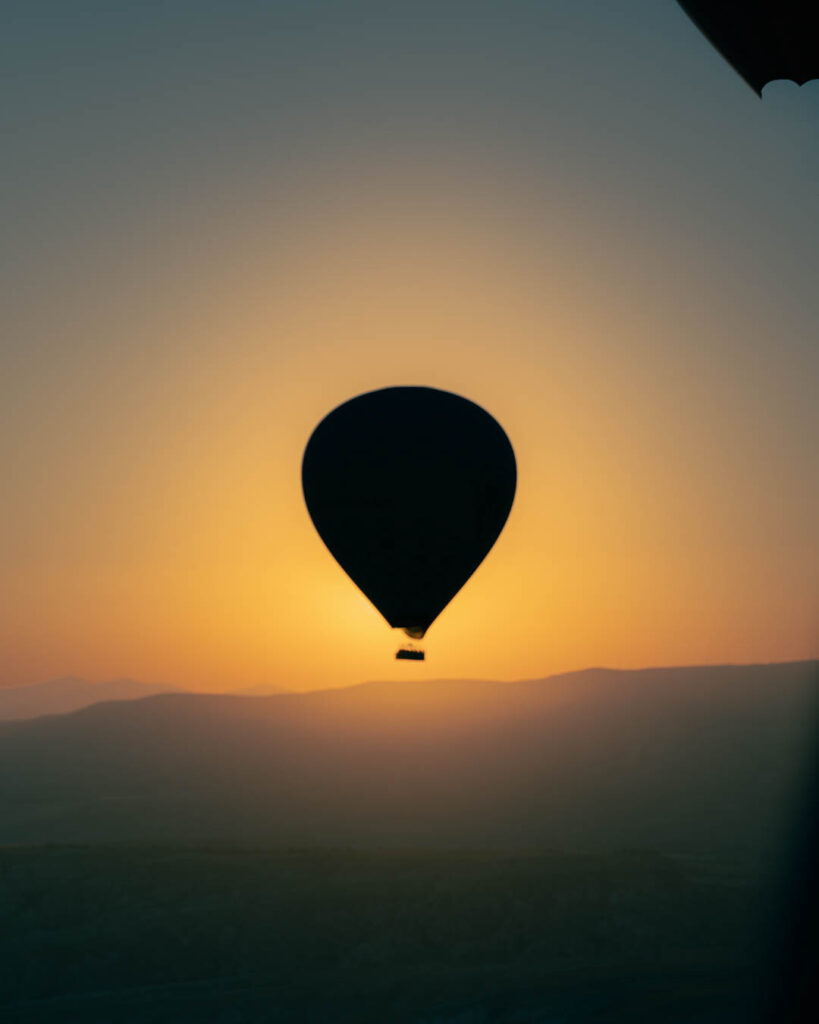
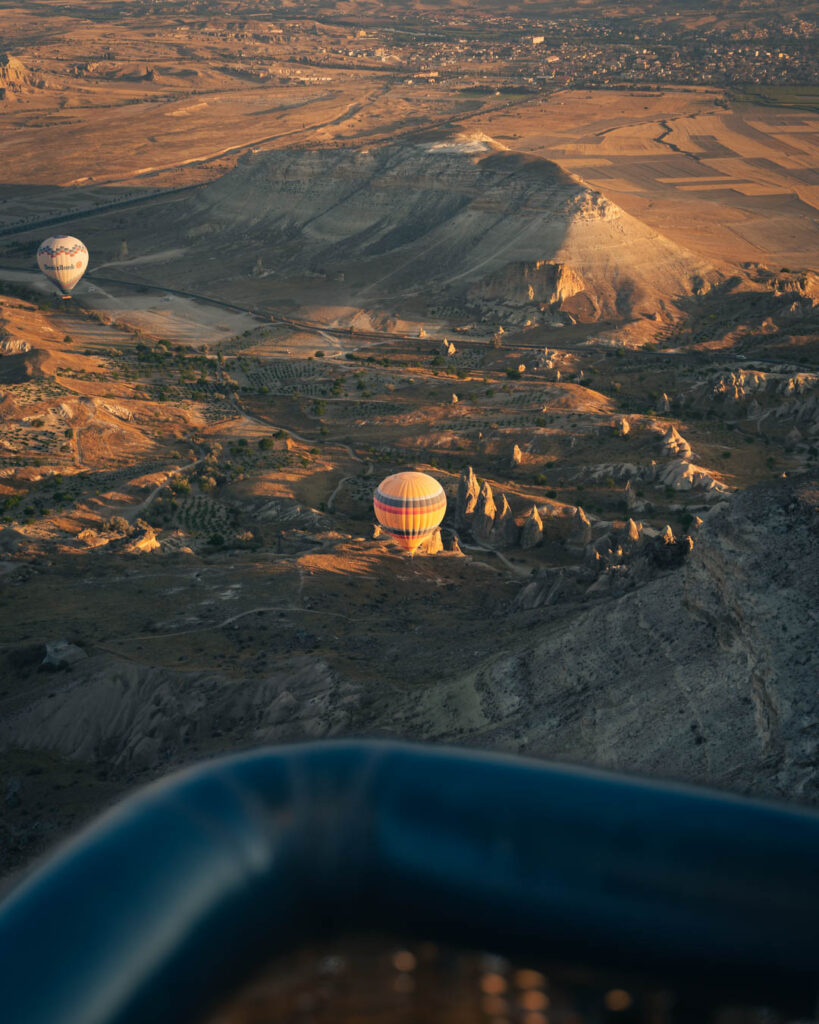
While the views from the hot air balloon are incredible, watching them fly from a hotel rooftop is arguably the better experience. There are many hotels with incredible terraces from which you can watch the balloons with a breakfast, and so I’d recommend checking this out when you book your hotel to see if this is a facility they have. The most famous terraces are the Divan cave house and Museum hotel, and while these are supposedly for hotel guests only during the sunrise, I was able to walk straight into both to watch and take some photos pretty easily. I was even offered to stay for breakfast with some of the guest I got talking at the hotel too but figured this was taking the Micky a little too much.
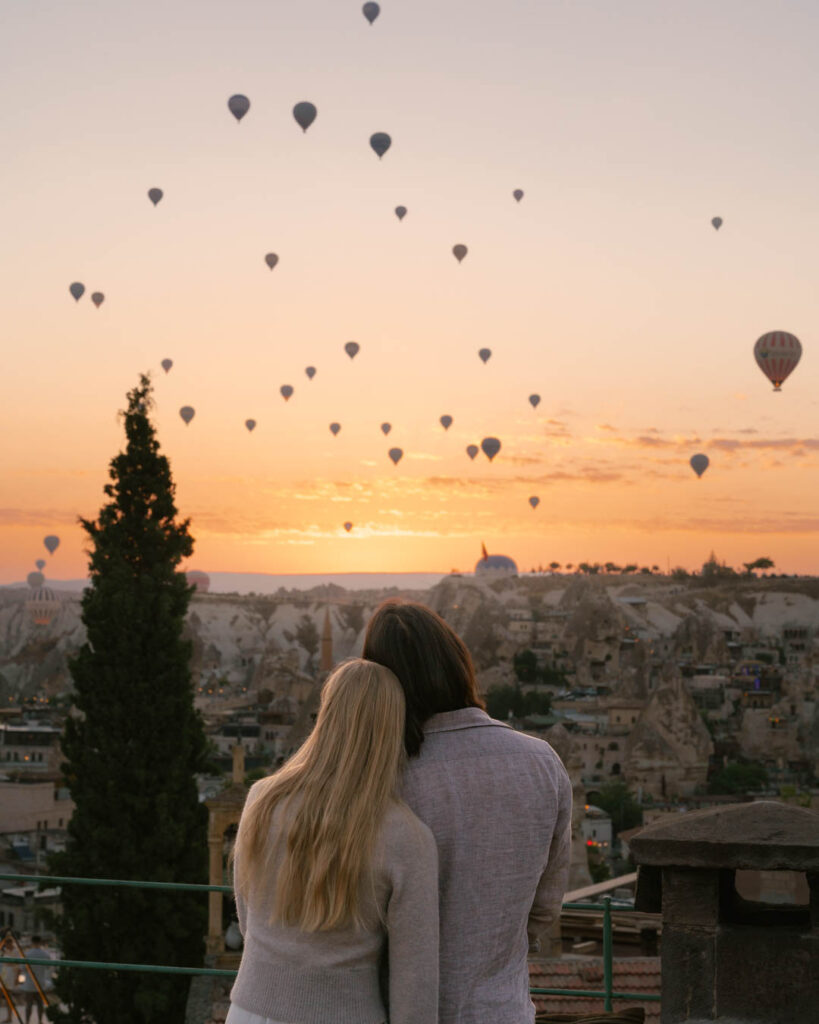
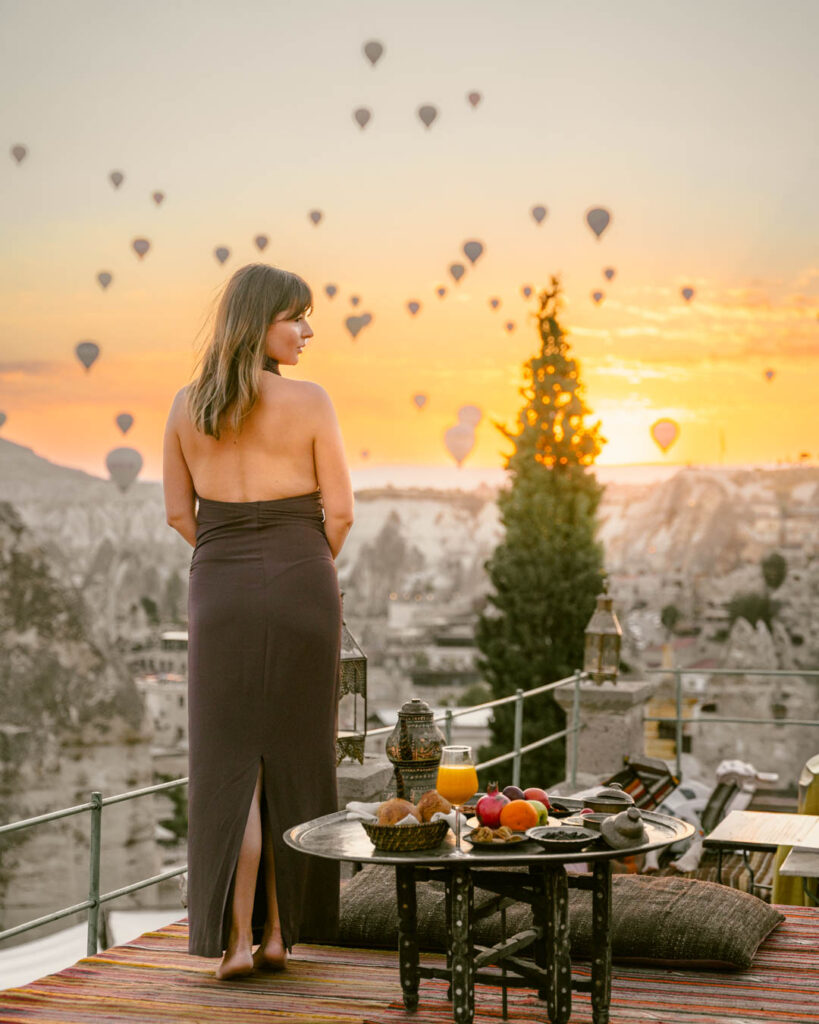

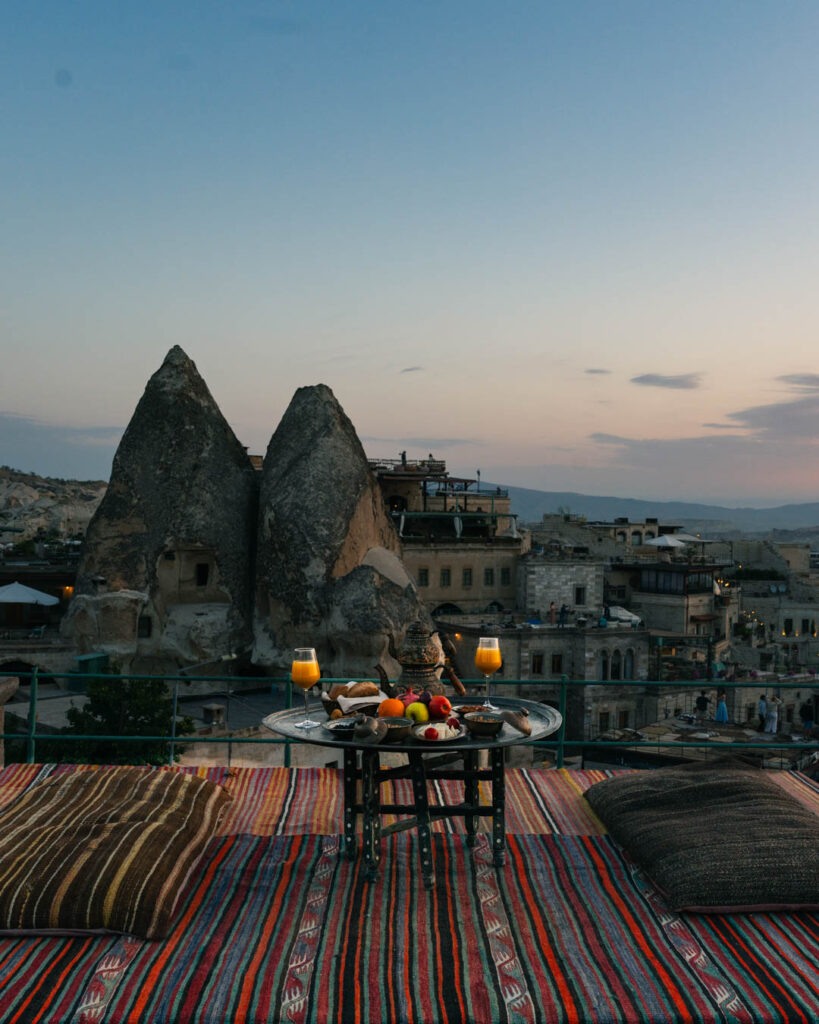


Once you’ve had a little nap to recover from the early start, it’s time to start exploring the area around Göreme. On almost every side of the town, there are valleys formed by ‘Fairy chimneys’; these are huge, mushroom-shaped spires formed by volcanic eruptions thousands of years ago. Many of these have homes and pigeon holes carved into them from where they were inhabited as cave homes for hundreds of years until around 1960. At this point, all residents of these homes were moved into more modern housing due to safety concerns after a series of earthquakes. This is because the stone which makes these spires is very soft, and so when the homes were carved into them, it made them structurally weak and susceptible to collapsing.
The best valleys to explore are the Rose Valley, Love Valley and Sword Valley, and this can be done in many ways. Firstly, all of these are accessible by hiking and mountain biking trails, which you can access from the town within 5-20 minutes, depending on the valley and where you are staying. Unfortunately, I came down with a chest infection while here, and so didn’t manage to get out of the hotel enough to fully explore these myself, but if you type mountain biking Capadoccia into TikTok, you’ll see some outrageous videos of the trails here at sunrise. This is something I’m gutted about missing out on and might just lead me to a capdoccia round two at some point.
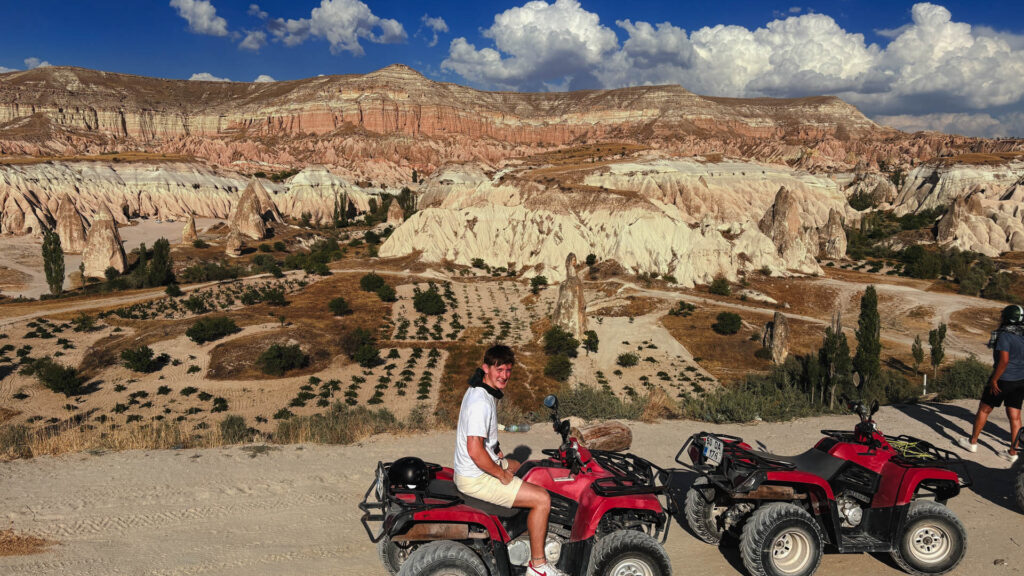
If you are a little short on time, like we were because of my illness, there are some tours you can do which give you a brief look into several of the valleys at once. We chose to do an ATV tour where you ride quadbikes around a couple of the valleys, taking in viewpoints and some of the off-road tracks, which was great fun. You can also do this tour both on horseback or in a jeep if riding a quadbike isn’t your cup of tea.
If you visit the Göreme Open Air Valley on foot, there is also the Göreme Open Air Museum here, which consists of around 300 separate cave churches and monasteries. These are remnants from when the area was mostly Christian before the population exchange in 1923. Because of how soft the stone is, which forms the spines, they were unable to create the mosaics and artwork which usually adorn the roofs of churches, and so they had to harvest pigeon eggs to create a kind of plaster which could then be painted onto. You could visit this in the afternoon and then continue your hike up through the Sword Valley to the top, where there is one of the best sunset spots in Cappadocia. Sunsets in Cappadocia are just as beautiful as sunrises, despite there being no hot air balloons. This is because of the unique composition of the rocks which form the valley, which leads them to ‘glow’ when hit with the golden hour light that sunset creates. This is especially visible when looking out to Rose Valley, which has a naturally red tinge.

If you’ve explored the immediate area around Göreme, there are two well-known tours that you can do, which take in the larger area of Cappadocia: the red tour and the green tour. We chose to do the green tour as it includes the largest underground city in Turkey, which was something we were eager to see and learn about. Inside the cities, it isn’t exactly what you’d picture, with no artifacts, signs, or real context to the rooms besides what your tour guide explains to you. They are impressive for the sheer scale and history of them. We visited the largest city, which was home to roughly 20,000 people, and went as far as 8 stories underground. I wouldn’t recommend going all the way inside, though, if you struggle with mobility or crouching for periods of time, as there were some of the passages that were giving me flashbacks to the Cu Chi tunnels in Vietnam, where you’re not far off having to crawl on your hands and knees to get through.
The tour also includes the Ilhara valley which was a bit of a let down; the images on google and the tour webistes are from several years ago when the river had much more power and restaurnats were operating beside and on the river however the river has since become a lot less powerful and almost all of the restaurnats were found by the government to be operting illegally and so have been demolished. The lunch here at the top of the valley, though, was to die for; they have their own trout farm and cook and serve it in cast iron pots, which gives the most incredible flavour.
The red tour takes in some of the valleys which I mentioned earlier, the open air museum, and Uchisar castle, which we didn’t see the point of if you have already explored the valleys differently. However, since returning home, I’ve learnt that there is a combined red and green tour, which is basically the good bits of both tours put together. The exact itinerary varies, but it usually includes the open-air museum, underground city, and Uchisar Castle. This is the tour I would choose to do if I went again, and it could mean you can tick off all of the highlights of Cappadocia in just 2/3 days.
